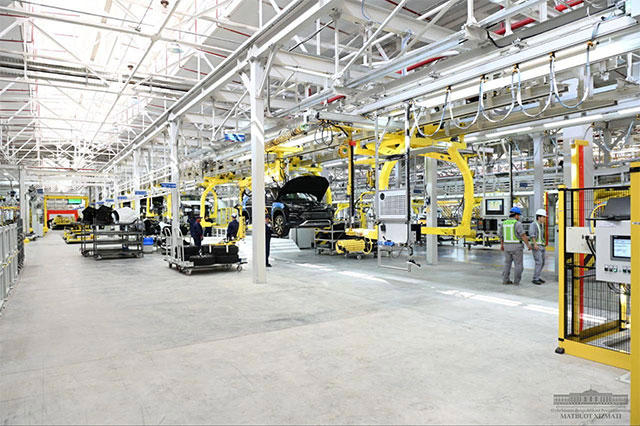
BYD Plans Production Expansion, Price Cuts, and Model Line Growth in Uzbekistan
BYD Plans Production Expansion, Price Cuts, and Model Line Growth in Uzbekistan
Tashkent, Uzbekistan (UzDaily.com) — Chinese automaker BYD announced plans to expand production in Uzbekistan, deepen local sourcing, reduce vehicle prices, and broaden its model lineup, according to executives at the local factory.
Azizbek Mukhitdinov, CEO of BYD Uzbekistan Factory, and Deputy Director Shafkatbek Alimov said demand for BYD vehicles in the country has exceeded expectations. The long-term plan aims to raise annual production at the Jizzakh plant from 50,000 vehicles to 500,000 by 2030.
Uzbek-made vehicles will be sold domestically and exported to neighboring countries, potentially including Kazakhstan and Tajikistan, according to company estimates.
The factory is also pursuing deeper localization. Currently, seats, glass, and plastic components are supplied by local producers. Future plans include local production of wiring, rubber parts, traction batteries, and engine components. The first projects are expected to launch in the first quarter of 2026.
Alimov noted that high prices for hybrid and electric models are largely due to the cost of traction batteries. Expected reductions in battery prices, combined with new technologies, should lower vehicle costs and increase electric vehicle range. A new, more affordable model is scheduled for release in Uzbekistan in 2026, though its name has not yet been disclosed.
In June, the BYD Uzbekistan plant rolled out its first serial electric vehicle, the BYD SONG PLUS DM-i CHAMPION, marking the start of mass production of new-energy passenger vehicles for Uzbek consumers. Initially, production focuses on the C-segment SUV BYD SONG PLUS DM-i CHAMPION and the BYD CHAZOR CHAMPION sedan, both featuring BYD Super DM-i technology.
The plant’s initial production capacity is up to 50,000 vehicles per year, with exports to Central Asian markets. Subsequent expansion plans include a $300 million investment to raise output to 200,000 vehicles annually and a third phase investment of $500 million to reach 500,000 vehicles per year.